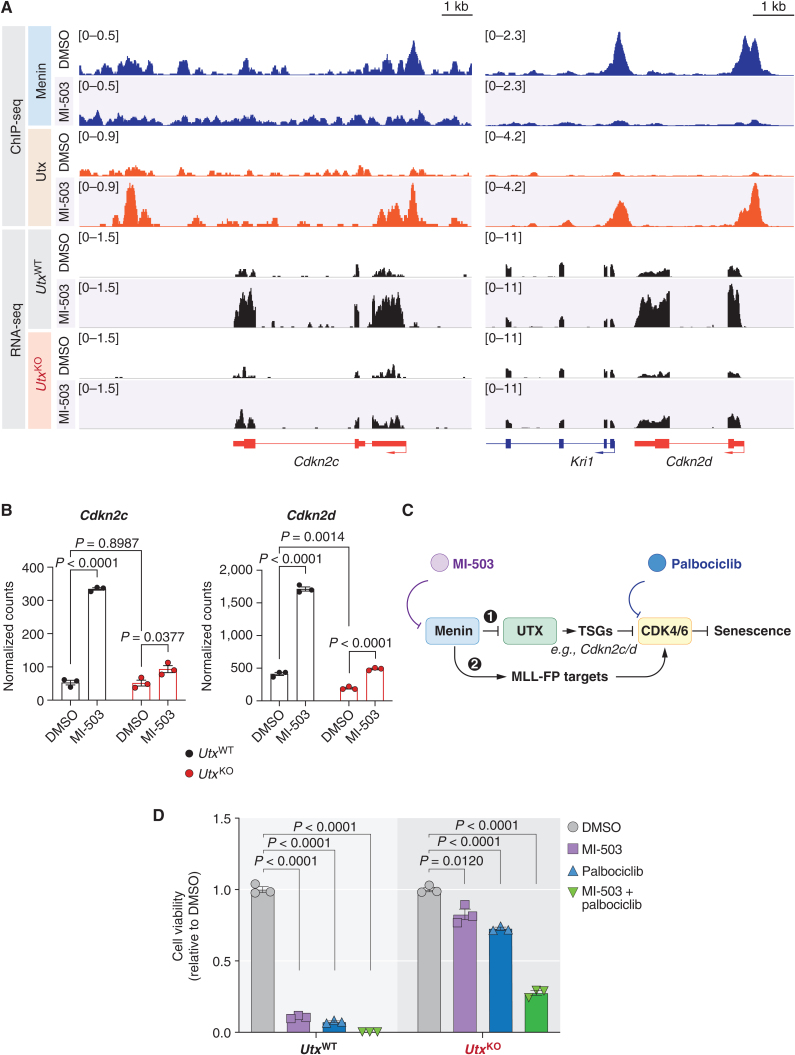Figure 6.
Combinatorial targeting of Menin and CDK4/6 overcomes resistance associated with MLL3/4 dysfunction. A, Genome browser representation of ChIP-seq (top) and RNA-seq (bottom) normalized reads [average reads per kilobase per million mapped reads (RPKM)] for Cdkn2c and Cdkn2d loci from mouse UtxWT or UtxKO MLL-AF9 leukemia cells treated with vehicle (DMSO) or a Menin–MLL inhibitor (MI-503) for 96 hours. B,Cdkn2c and Cdkn2d expression (mean normalized read counts) from mouse UtxWT (black) and UtxKO (red) MLL-AF9 leukemia cells treated with vehicle (DMSO) or a Menin–MLL inhibitor (MI-503) for 96 hours (mean ± SEM, n = 3 replicates, P values calculated by Student t test). C, Proposed model and rationale for combination therapies based on Menin–MLL and CDK4/6 inhibitors. Our data support a model whereby (1) Menin restricts UTX-mediated transcriptional activation of tumor suppressor genes (TSG), including Cdkn2c and Cdkn2d, which are natural inhibitors of the CDK4 and CDK6 kinases, which in turn inhibit cell-cycle arrest and senescence. Our model predicts that CDK4/6 inhibition using palbociclib should boost the anticancer activity of Menin–MLL inhibitors, which we show induces an MLL3/4–UTX tumor-suppressive axis, by more potently inhibiting these downstream kinases. On the other hand, Menin is known to be required for the activation of MLL-FP targets like Meis1 and Cdk6 itself to sustain leukemia (2). Our model predicts that combination therapies based on Menin–MLL and CDK4/6 inhibitors should act synergistically to suppress leukemia proliferation by potently engaging two parallel pathways that converge on regulation of cell-cycle progression. D, Relative viability of UtxWT and UtxKO MLL-AF9 leukemia cells treated with either vehicle (DMSO), a Menin–MLL inhibitor (MI-503), a CDK4/6 inhibitor (palbociclib), or a combination of both inhibitors for 6 days (mean ± SEM, n = 3 replicates, P values calculated by Student t test).

